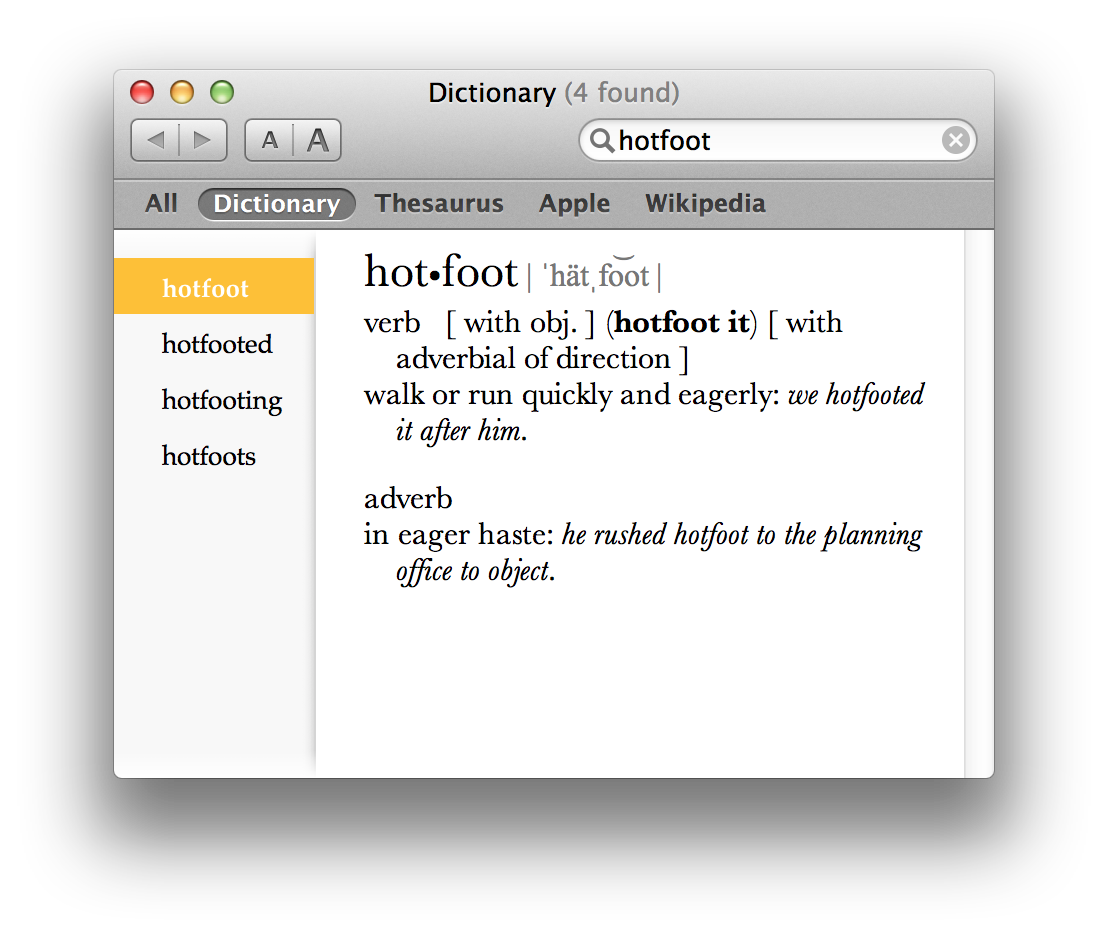Hotfoot
 Friday, November 16, 2012 at 11:18AM
Friday, November 16, 2012 at 11:18AM 
In my reading of the Revised English Bible, I've come across an interesting translation choice that I thought I'd quickly share.
I admit that personally, I don't use the word hotfoot in everyday conversation. Yet, I have heard the word used occasionally, usually from an "older" individual.
The word occurs in three places in the complete Revised English Bible. In all of the texts below, there is some reference to "feet" in the original along with a word that suggests speed. The REB combines this idea into one word: hotfoot.
Job 31:5
I swear I have had no dealings with falsehood and have not gone hotfoot after deceit.
Here, Job is defending himself against the accusations of his friends. The REB's use of hotfoot conveys the Hebrew חוּשׁ/ḥuš, which by itself simply means "to hurry," as applied to Job's foot. Other translations: my foot has hurried (NIV), my foot has hastened (ESV), my foot has rushed (HCSB).
Proverbs 1:16
they hasten hotfoot into crime, pressing on to shed blood.
In this context the writer of Proverbs is referring to the sinful. The text says literally that their feet run (רוּץ/ruṣ) to evil. The NIV employs rush here with "their feet rush," making perhaps an rough attempt at approximating the sound of the Hebrew with an English word. The ESV and HCSB both translate the phrase as their feet run.
2 Esdras 1:26
when you pray to me, I shall not listen. You have stained your hands with blood; you hasten hotfoot to commit murder.
At the beginning of the apocalyptic 2 Esdras, God is making his case against Israel for their coming judgment. This text, although originally written in Hebrew, only survives in Latin. The NRSV offers a fairly literal translation to the last phrase: "your feet are swift [pedes vestri impigri] to commit murder." The Latin impiger simply conveys the idea of swift, active, or diligent.
Although hotfoot is not a word used often by myself or in my circles, I actually like what is communicated by the REB in these verses. All three instances have to do with hastening toward some kind of sinful activity. The use of hotfoot suggests that the offender is not merely moving toward the sin quickly, but moving toward it quickly with desire and anticipation--with eagerness as the definition at the top of the post suggests. The offender simply cannot get to the offense quickly enough!
[Edit: I meant to include this earlier, but it should be known that the REB retains the NEB's earlier use of hotfoot in its text.]
As always, your thoughts, questions, comments and rebutalls are welcome below.


